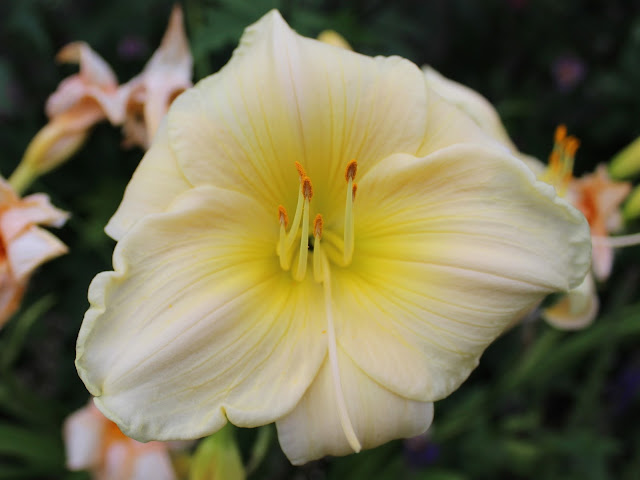It's Friday, so that means it's time for Friday's Hunt, hosted by
Eden Hills. As usual, there are 3 topics for today: Starts with I, Week's favourite, and Pink.
Starts with I
I have a few different things for the letter I this week, and I couldn't decide on just one, so I'm sharing all of them!
First, this week we were quite
industrious. Our new home is heated by a wood stove in the winter, which is located in the basement. The previous owner advised us that he used about 7 cords of wood to heat the house per year, so we have recently had 4 cords delivered, with another 4 coming in late October. Here is the wood as it was delivered outside the house.
We needed to be
industrious to get the wood from the driveway into the house. Each evening, Marc works on transporting the wood with the wheelbarrow into the garage, where he sends it down a chute into the basement wood storage room, where I, in turn, have been stacking it. We have made good progress and are now on the 5th row of stacked wood in the basement (this picture was from a couple of days ago when there were only two rows in progress. The rows go up to the ceiling, except for the back one because of the pipe being in the way.
Here's how much wood is left - we still have some
industriousness left to go, but I am pleased with how well we have done so far!
Second, I'm sharing a photograph I took this summer of
Idia americalis, a moth whose larvae feed on lichen and dead leaves. Its common name is the American
Idia. The trees in my yard have a lot of lichen on them, and I'm surrounded by woods with decaying debris on the ground as is normally seen in woods, so it's not surprising that I see quite a few of these moths.
There are 18 different
Idia moth species in North America that you might see if you look for them!
An
interesting Idia fact I found is that one species,
Idia gopheri, lives in abandoned burrows of the
gopher tortoise and feeds on its droppings. We don't have that species here because the gopher tortoise only lives in the southeastern US.
Third, I'm sharing a picture of our cat,
Izzy, sitting on a hay bale. I think she is glad that I have the sheep back and therefore have hay bales again, because she always loved sleeping on hay in my Iowa barn, and as soon as I put the bales in the garage here, she was on them!
(Hmmm.... letter J for next week. That one might be tricky!)
Week's Favourite
This week's favourite is a photograph I took on Tuesday at the Sackville Waterfowl Park. This young bird was scurrying about the reeds and grasses when I was there, and I was captivated by it, although it proved very difficult to photograph because it was always behind something! When I finally downloaded my pictures that day, I sent this picture, which was the best one of the bunch, to the park staff to see if they could help me identify it.

I was quite excited when they responded quite quickly that I had managed to photograph a baby sora. This was exciting for several reasons. Firstly, it's very late in the year for sora chicks, so seeing this one is surprising. Secondly, sora chicks are not often seen - although the sora is a common marsh bird, it is also a secretive bird and is hard to spot, so seeing a chick is really quite rare, at least in this area! Thirdly, it's a bird I had never seen before! I'm hoping I might see it again as it grows. The sora chick starts out solid black and downy-fluffy all over. This one is just losing its down and developing its adult feathers, which helped to identify it.
Pink
I know it's probably going to be a common choice, but I just couldn't help choosing to showcase
pink blossoms for this prompt. There were so many to choose from that I decided to put them into a couple of mosaics. These are a variety of
pink flowers from my garden this summer, as well as some
pink flowers I photographed at the waterfowl park.
Pink is a bit subjective - when exactly does
pink become mauve, or purple? Opinions will vary on this matter, but hopefully we can all agree that at least some of these are
pink flowers.
Clockwise from top left:
Spiraea tomentosa, unknown
Geranium species, second unknown
Geranium species,
pink clover (
Trifolium species),
pink phlox (
Phlox paniculata).
Clockwise from top left: Paeonia lactiflora cultivar (bi-coloured peony), Lythrum salicaria (purple loosestrife, bad invasive weed, but pretty), Malva moschata, daylily (with friend!), and rose (again, unknown species, although there was a tag for a John Cabot rose in the outbuilding, so I think it might be that one).
























































